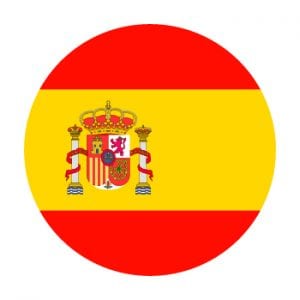
An Overview of Spanish Dialects
There are a few languages considered to be bold and beautiful and Spanish is one of them. It is a popular language that mainly Spanish People use as a source of mutual communication. Spanish is the official language of Spain with many Spanish dialects,. Due to the language, the country is named Spain.
Like every other language, Spanish also has many different dialects and accents. People speak Spanish language throughout the World. In this article, I will discuss the Spanish Language, its origins, its ancestry, its development and evolution throughout the centuries, all of the Spanish Dialects, and everything else in detail. So, stick around to know everything about this beautiful language that you do not yet know but would like to.
Origin Of Spanish
Roman people brought the Spanish language from a dialect of Latin into the Iberian Peninsula in the 3rd Century during the First Punic War. They call it the Original Language in the 5th Century after the fall of the Western Roman Empire.
Spanish is one of the most popular languages of Western Europe after the English Language. It is the fourth most spoken language in the world overall led by English, Mandarin Chinese, and Hindi, with nearly 500 million Spanish Speakers. Spanish is a very distinct language. It is the most widely spoken Romance language in the World.
Though it has a heavy influence from other Romance Languages like Vulgar Latin, French, and Italian, Spanish is a separate language. Spanish contains many loanwords due to the strong influence of the French and the Portuguese language. Spanish in South America varies greatly across the region, with the Caribbean dialect featuring distinct pronunciation and vocabulary influenced by the area’s cultural heritage.

It has a strong Italian influence due to the neighboring country, Italy. Being the native language of Spain, it was granted official status in the 15th Century, and by the end of the 16th century, it had spread rapidly to every part of the world other than just Spain.

Geographical Distribution
Spain
- Castilian Spanish: The standard form of Spanish spoken in central and northern Spain, Castilian Spanish serves as the foundation for written and formal spoken Spanish. Its clear pronunciation and standardized grammar make it widely understood across the Spanish-speaking world.
- Andalusian Spanish: Andalusian Spanish, spoken in southern Spain, is known for its relaxed pronunciation and distinctive phonetic traits, such as the loss of final consonants. It exhibits influences from Arabic due to historical connections with the Moorish period.
Latin America
- Murcian Spanish: Murcian Spanish is a regional variety spoken in the Region of Murcia, notable for its unique phonetic features, such as the reduction of certain consonant sounds. It also includes vocabulary distinct to the region.
- Mexican Spanish: Mexican Spanish is the most widely spoken Spanish dialect in the world, with distinct vocabulary and pronunciation influenced by indigenous languages such as Nahuatl. Regional accents and slang vary across different parts of the country.
- Andean Spanish: Andean Spanish is spoken in the Andean regions of South America, particularly in Peru, Ecuador, and Bolivia. It features pronunciation and vocabulary influenced by indigenous languages such as Quechua and Aymara.
- Peruvian Spanish: Peruvian Spanish displays a range of linguistic influences, including Quechua, reflecting the country’s rich cultural heritage. Regional variations exist across the coastal, highland, and jungle areas.
- Chilean Spanish: Chilean Spanish is a regional variety known for its unique phonetic features, including the aspiration of certain consonants and the use of distinctive vocabulary. It is characterized by rapid speech and informal expressions, reflecting the local culture and history of the region. Influences from indigenous languages and the 16th-century Spanish colonization have contributed to its distinctiveness. Chilean Spanish stands out within the broader spectrum of Spanish dialects, showcasing the rich linguistic diversity of the Spanish-speaking world.
Caribbean
- Cuban Spanish: Known for its fast pace and distinct vocabulary, Cuban Spanish features influences from African, indigenous, and Spanish elements. It is characterized by its unique phonetic changes, such as dropping the letter “s” at the end of syllables.
- Puerto Rican Spanish: Puerto Rican Spanish combines elements from Spanish, African, and Taino cultures, resulting in unique pronunciation and vocabulary. It often includes a quick speech pattern and the use of code-switching with English.
- Dominican Spanish: Dominican Spanish is known for its rapid speech and phonetic variations, such as the elimination of certain consonants. It is influenced by African and indigenous languages, creating a distinct linguistic style.
United States
- Chicano Spanish: Chicano Spanish is a blend of Spanish and English spoken primarily in the southwestern United States by Mexican Americans. It features code-switching, unique vocabulary, and cultural expressions that reflect the blending of two linguistic traditions.
- New York Spanish: New York Spanish is influenced by Puerto Rican, Dominican, and Cuban communities, resulting in a dynamic linguistic environment with English loanwords and a mix of Caribbean and American Spanish features.
Linguistic Features
Pronunciation
- Regional variations in pronunciation are a defining characteristic of Spanish dialects, with differences in vowel and consonant sounds across regions. For instance, the pronunciation of the “s” and “z” sounds may vary significantly between Spain and Latin America.
Vocabulary
- Vocabulary differences are influenced by indigenous languages, historical context, and regional culture. Local slang, idioms, and terminology often set each dialect apart and offer insight into the region’s heritage.
Grammar
- Spanish dialects exhibit variations in verb conjugation, use of pronouns, and sentence structure. These differences can impact communication, especially when speakers from different regions interact.
Cultural Influences
Indigenous languages and their impact on Spanish dialects
Indigenous languages such as Quechua, Aymara, Nahuatl, and others have left a lasting impact on regional Spanish dialects. They contribute to the distinct vocabulary, pronunciation, and expressions found in each area.
Historical context and its role in shaping dialects
Historical events, such as colonization and migration, have influenced the evolution and spread of different Spanish dialects. These events introduced linguistic influences from other languages and cultures, shaping the diversity of Spanish dialects.
Yucatec Maya’s Impact on Spanish
Yucatec Maya, an indigenous language of the Yucatán Peninsula, has had a profound impact on Spanish in the region, shaping its vocabulary and pronunciation. Scholars like Charles E. have explored how these influences contribute to the “Socio-Phonological Variation” observed in areas where Yucatec Maya and Spanish coexist. This interaction reflects a broader theme in Hispanic sociolinguistics, where the American form of Spanish varies significantly from European Spanish. Eleanor Greet’s research highlights the importance of understanding informal situations and the role of native speakers in preserving linguistic diversity. Chilean Spanish, for instance, is another regional variety that shows distinctive features influenced by the 16th-century Spanish colonization of the area. The Académia Española (in conjunction with other language institutions) plays a vital role in maintaining standards across Spanish-language countries. Publications like “Lusophone Linguistics.4(2)” provide further insight into the intersection of Spanish and indigenous languages, emphasizing the ongoing evolution of the official language in these regions.
Mutual Intelligibility
How speakers of different dialects understand each other
Spanish dialects maintain a degree of mutual intelligibility, allowing speakers to communicate effectively despite regional differences. Common grammar and vocabulary help facilitate understanding across dialects.
Challenges in comprehension across dialects
While Spanish dialects share a common base, pronunciation and vocabulary differences can sometimes present barriers to understanding, particularly for speakers from distant regions.
Socio-Linguistic Considerations
Formal and informal language usage
Variations in dialects are often observed in formal versus informal contexts. Formal settings may require adherence to standard grammar and pronunciation, while informal situations allow for regional expressions and colloquialisms.
Variations based on social and educational factors
Social and educational factors can influence the characteristics of a Spanish dialect, including levels of formal language proficiency and access to standardized Spanish education.
Research and Study
Notable studies on Spanish dialects
Researchers have conducted extensive studies on the variations and nuances of Spanish dialects worldwide, providing insights into their linguistic features and cultural contexts.
Institutions and organizations supporting Spanish linguistic research
Institutions like the Real Academia Española work to standardize and research Spanish dialects, promoting a comprehensive understanding of the language’s diversity.
Linguistic Variation in Spanish
Linguistic variation is a hallmark of Spanish, reflecting its evolution across different regions and cultures. From the American dialects in Latin America to the unique blend of Spanish in Equatorial Guinea, these variations enrich the language and showcase its adaptability. Each region’s version of Spanish incorporates local influences, resulting in diverse pronunciations, vocabulary, and grammar.
For example, the person singular pronouns can vary significantly between Spain and Latin American countries, affecting both formal and informal speech. Understanding these variations is crucial for effective communication and highlights the dynamic nature of Spanish as one of the Romance languages. This diversity also poses challenges and opportunities for learners and linguists alike.
Educated Speakers and Linguistic Norms
The role of educated speakers in maintaining and promoting linguistic norms is critical in any language, including Spanish. In regions like Puerto Rico, these speakers often serve as linguistic models, influencing how language is taught and perceived. José Ignacio and Olarrea’s research shows that educated speakers tend to adhere more closely to the standards set by institutions like the Académia Española, particularly in the use of person singular and singular pronouns. This adherence helps preserve the integrity of Spanish as one of the Romance languages, while also allowing for regional variations.
John M. (2011) emphasizes that the influence of educated speakers extends beyond formal settings. Their everyday use of language, including subtle nuances in pronunciation and grammar, sets a benchmark for others. In Puerto Rico, for example, the pronunciation of singular pronouns by educated speakers often reflects a careful balance between traditional norms and local influences, demonstrating the dynamic nature of the Spanish language.
Spanish in Hispanic America and Beyond
Spanish is an official language in numerous Spanish-language countries, making it a critical subject of study and research by prestigious institutions such as Georgetown University Press, University of Chicago Press, and Cambridge University Press. In Hispanic America, Spanish speakers include both native speakers who view the language as their mother tongue and those for whom it is a foreign language. Hispanic sociolinguistics examines the complexities of the language, particularly its use in formal and informal situations. This discipline also delves into how singular pronouns and other grammatical elements are influenced by local cultures and traditions. José Ignacio, among other scholars, has contributed significantly to our understanding of these topics. Since the 16th century, the influence of Spanish has been undeniable, shaping education levels and other aspects of life across the United States and beyond. The Académia Española (in conjunction with other language bodies) sets linguistic standards for the Spanish-speaking world. Publications such as “Lusophone Linguistics.4(2)” provide further insights into the nuances of the language, including its similarities and differences with other Romance languages.
Socio-Phonological Variation in Spanish
While Spanish speakers across the globe share a common linguistic root in European Spanish, the language exhibits fascinating variation. Sociolinguists like Eleanor Greet delve into this phenomenon in journals like Lusophone Linguistics. Her research on Socio-Phonological Variation, for instance, explores how Spanish pronunciation can differ between Spanish-language countries and even within them. This variation can be influenced by factors like the speaker’s background and whether Spanish is their native tongue or a foreign language. Understanding these complexities is crucial in the field of Hispanic sociolinguistics, which studies the social and geographical factors that shape how Spanish is used in Romance languages.
The Spanish variety spoken in Central American countries demonstrates significant socio-phonological variation, influenced by indigenous languages like Yucatec Maya. Despite being a single language, Spanish incorporates diverse elements, such as the formal pronoun usage dictated by the Académia Española. This variation is meticulously studied by scholars like Charles E., who analyzes the interplay between formal and informal speech patterns. The blend of Spanish with regional linguistic characteristics exemplifies the rich tapestry of Hispanic sociolinguistics in the region.
Propagation of Spanish
With the discovery of the New World, The Americas (which comprises North America, Central America, and South America also known as Latin America), in the 15th Century by Christopher Columbus, the Spanish quickly propagated to the other parts of the World instead of being just confined to the Iberian Peninsula.
Spanish was widely spoken in all of The Americas until the American War of Independence which restricted Spanish to Central America, South America, and the Iberian Peninsula only but Spanish is still the second most spoken language in North America, especially in Mexico. Nearly 43 million Central American people speak Spanish.
That is about 98% of the total population of Central America. Roughly 50% of the population of Latin America speaks Spanish. The Spanish Empire also greatly influenced the advent of the Spanish in the other parts of the World. Known as “The empire on which the sun never sets”.
The Spanish Empire reached its height in the 18th Century which greatly impacted the propagation of Spanish till its dissolution in the 20th century. In today’s world, the 21st Century, Spanish is now the fourth most widely spoken language overall.
The Role of Peruvian Spanish in Linguistics
Peruvian Spanish holds a significant place in the study of Spanish dialects due to its unique linguistic features and historical influences. Spoken predominantly in the Andean regions of Peru, this dialect incorporates a range of indigenous elements, particularly from Quechua and Aymara, enriching its vocabulary and phonetic characteristics. Researchers like Eleanor Greet and Charles E. have delved into the complexities of Peruvian Spanish, highlighting its role in the broader spectrum of Romance languages. Their studies, featured in journals like “Lusophone Linguistics.4(2),” explore how the interplay between native languages and Spanish shapes the dialect’s distinct identity.
The Académia Española, in conjunction with other linguistic institutions, recognizes the importance of Peruvian Spanish and its contributions to the Spanish language as a whole. Notable scholars, including José Ignacio and John M. (2011), have examined the grammatical structures and usage of singular pronouns in Peruvian Spanish, offering insights into its formal and informal contexts. These studies underscore the dialect’s unique features, such as its person singular pronoun usage and auxiliary verb forms, which distinguish it from other Spanish dialects in both the Andean regions and the wider Spanish-speaking world.
Influence of Indigenous Languages
The contact between Spanish and native languages has significantly influenced the linguistic landscape of many Spanish-speaking regions. In Central America and South America, languages like Quechua, Aymara, and Nahuatl have left an indelible mark on local Spanish dialects. This linguistic variation is especially notable in places like Costa Rica and Ecuador, where the integration of indigenous vocabulary and pronunciation patterns enriches the regional Spanish.
In Equatorial Guinea, the only Spanish-speaking country in Africa, the interaction between Spanish and native languages showcases a unique blend of linguistic features. The vowel quality and choice of pronoun in Equatoguinean Spanish reflect this language contact, contributing to the diversity within the broader spectrum of Spanish dialects. These interactions illustrate the dynamic nature of Spanish as it continues to evolve through its contact with various native languages.
List Of Notable Figures Who Spoke Spanish
Here are some of the most influential and notable figures of the world who were very fluent in different dialects of Spanish. This list focuses mostly on literary figures who contributed to Spanish literature and language.
- Christopher Columbus (Famous Explorer and Navigator)
- Miguel De Servantes (Greatest Spanish language writer of all time)
- Gustavo Adolfo Becquer (Well-known poet and a playwright)
- Rosalia De Castro (Spanish writer and poet)
- Juan Ramon Rimenez (Nobel literature laureate)
An Overview of Spanish Dialects
There are 10 known regional dialects of Spanish that are still in use today. They have regional variations in their spellings. Language Study of Spanish shows that most of these dialects have a different vocabulary, grammar, and pronunciations.


The Spanish accent varies in each of these dialects. Castilian Spanish is the official dialect of the Spanish Peninsula. There is a regional variation in these dialects otherwise there is no major difference.
List of Spanish Dialects
All 10 of the Spanish dialects are discussed below:
- Castilian Dialect: It is the Official Spanish language dialect that is spoken mainly in northern and central Spain.
- Andalusian Dialect: This dialect is the second most popular dialect in Spain that is spoken in the southern part of the country. It differs greatly from the Castilian Dialect.
- Murcian Dialect: This dialect is spoken in the Autonomous Region of the Community of Murcia in the southeast of Spain.
- Canarian Dialect: The dialect of the Spanish Canary Islands resembles the dialect of the Spanish Caribbean Islands very much. The Canarian vocabulary is also heavily influenced by the Portuguese due to Portugal’s efforts to colonize the islands.
- Llanito Dialect: This dialect is a combination of Andalusian Spanish and British English. Its vocabulary is heavily influenced by British English due to Gibraltar being a British Overseas Territory.
- Latin American Dialect: This dialect is spoken mainly in Mexico, Bolivia, Peru, Colombia, and other central and south American countries. Its difference from Castilian Spanish is just as same as the difference between American and British English.
- Rioplatenese Dialect: This dialect is popular in the River Basin region between Argentina and Uruguay. It more resembles Italian than Spanish.
- Caribbean Dialect: This dialect is spoken in Cuba, Puerto Rico, the Dominican Republic, and along the East Coast of Mexico and Central America.
- Equatoguinean Dialect: This dialect is the only dialect of Spanish that is spoken in Africa. It contains vocabulary and pronunciation patterns from both native Guineans and immigrant Germans of Cameroon.
- Colombian Dialect: Spoken mostly in Colombia, though Colombian Spanish is not so different from the Castilian dialect, it is more refined and more classical than the original dialect of Spanish.
Historical Influences on Spanish Dialects
The 16th century was a pivotal period for the evolution of Spanish dialects, marked by significant cultural and linguistic exchanges. The colonization of the Americas by Spain led to the widespread dissemination of the Spanish language, which began to incorporate elements from indigenous languages. This period saw the emergence of various regional dialects, each influenced by the local linguistic landscape. Scholars like Charles E. and Eleanor Greet have extensively studied these historical interactions, with their findings published in “Lusophone Linguistics.4(2).”
In the Andean regions, for example, the integration of indigenous languages with Spanish during the 16th century resulted in distinctive dialects such as Peruvian Spanish. The Académia Española plays a crucial role in maintaining linguistic standards while acknowledging these regional variations. Researchers like John M. (2011) have highlighted the use of singular pronouns and auxiliary verbs in these dialects, demonstrating how historical contexts continue to shape the evolution of Spanish. The work of José Ignacio further emphasizes the significance of these historical influences in understanding the development of Spanish dialects.
Dialectal Variations in Puerto Rico
Puerto Rico presents a fascinating case study in the diversity of Spanish dialects. As part of the broader spectrum of Romance languages, Puerto Rican Spanish has evolved uniquely, incorporating elements from African, Taíno, and American English influences. José Ignacio and Olarrea have extensively documented these linguistic traits, noting significant differences in the use of the singular pronoun compared to mainland Spanish. Educated speakers in Puerto Rico, for instance, often demonstrate a distinct pronunciation and vocabulary that reflect the island’s rich cultural history.
The Académia Española has taken an interest in these variations, aiming to document and standardize them where possible. John M. (2011) highlights the importance of this work, emphasizing that understanding the person singular forms in Puerto Rican Spanish can provide deeper insights into the broader linguistic patterns of the region. This academic perspective helps preserve the unique characteristics of Puerto Rican Spanish while promoting mutual intelligibility among Spanish speakers worldwide.

Effective Global Collaboration
In cross-cultural collaboration, addressing language barriers and cultural differences is crucial for success. Accurate translation of the source language into the target language is essential to ensure clear communication. Understanding cultural diversity and various communication styles, including body language, enhances cross-cultural communication. Academic translation services play a key role in bridging these gaps, facilitating the exchange of knowledge through academic journals. By prioritizing accurate translations and cultural awareness, organizations can foster effective collaboration and communication across diverse cultural contexts.
Translating academic documents into the English language requires precision and an understanding of subtle differences across cultures. English translation tools play a pivotal role in ensuring accuracy for a wide range of academic works. Involving a cross-cultural team is essential for effective collaboration, particularly when aiming for publication in international journals and target journals.
The Impact of Academia on Language
Academic institutions such as the Académia Española play a pivotal role in shaping and standardizing the Spanish language. Their work ensures that despite regional differences, Spanish remains cohesive and comprehensible across various dialects. José Ignacio and Olarrea highlight the importance of these institutions in documenting and preserving the unique features of different Spanish dialects, including those in Puerto Rico. This includes a detailed analysis of person singular and singular pronoun usage, which varies significantly across regions.
Influence of Academia on Choice of Pronoun
The Académia Española plays a crucial role in standardizing Spanish language norms, including the choice of pronoun usage across different dialects. John M.(2011) discusses how academic guidelines from institutions like the Académia shape linguistic practices, influencing how speakers select person singular forms in formal contexts.
In areas like Puerto Rico, the Académia’s standards guide educated speakers in their use of person singular pronouns, reflecting a balance between tradition and local cultural influences. José Ignacio and Olarrea’s research underscores the importance of these guidelines, as they help preserve the integrity of Spanish while allowing for regional variations in choice of pronoun.
Across Romance languages, including Spanish, regional variations in choice of pronoun usage reflect unique cultural and historical influences. José Ignacio and Olarrea explore how these variations manifest in different Spanish-speaking regions, emphasizing the impact of historical events and indigenous languages on linguistic evolution. In Puerto Rico, for instance, the choice of pronoun can vary significantly from mainland Spanish, showcasing the island’s rich cultural heritage and linguistic diversity.
The Rich Tapestry of Spanish Varieties in Central and South America
Spanish, a predominant language on Earth, showcases a rich diversity of regional varieties, especially in Central and South America. Countries like Costa Rica and Equatorial Guinea each have their unique dialects, contributing to the vibrant mosaic of Spanish-language countries.
Spanish is the national language in Central America, yet regional dialects flourish, each with its own nuances. For instance, Costa Rican Spanish, or “Tico” Spanish, is known for its distinctive use of diminutive and particular verb conjugations. In the coastal region, the speech often features a noticeable pronunciation difference, such as the aspiration of the “s” sound at the end of words.
Although geographically distant from Central and South America, Equatorial Guinea also contributes to the Spanish linguistic landscape. Local languages influence its Spanish variety and exhibits unique features in verb conjugation and second-person pronouns. This highlights the adaptability and regional diversity of Spanish as a global language.
Understanding Spanish Sociolinguistic Dynamics
Hispanic sociolinguistics examines how these regional varieties interact and evolve. For example, in formal situations, the use of formal pronouns and auxiliary verbs is more prevalent, contrasting with colloquial speech, which tends to be faster and uses more informal expressions. Educated speakers like José G. and John M. often exhibit a foundation in pronunciation that adheres to standard norms, yet they can easily switch to slower speech or regional dialects depending on the context.
In addition to Spanish, the linguistic landscape of Central America includes Mayan languages and language isolates, which are unique and not related to any others. These American languages further enrich the region’s cultural and linguistic heritage.
Understanding the regional varieties of Spanish and their sociolinguistic context, including the use of formal pronouns and verb conjugation differences, is essential for appreciating the full spectrum of Spanish as a language on Earth. Whether in formal situations or everyday conversations, the interplay of national languages and regional dialects shapes the dynamic and ever-evolving nature of Spanish in Central and South America.
Insights from John M. (2011)
John M.(2011) provides valuable insights into the evolution of Romance languages, particularly regarding their syntax and morphology. His research delves into how languages like Spanish have developed unique features over time, influenced by historical events and cultural interactions. In studying syntax, John M.(2011) explores how sentence structure and word order have evolved, reflecting broader linguistic trends across Romance languages. This scholarly perspective offers a deep understanding of language development and its impact on communication today.
José Ignacio; Olarrea’s work complements John M. (2011)’s research by focusing on the morphology of Romance languages, including Spanish. Their studies examine how morphological changes, such as the evolution of verb forms and noun endings, have shaped linguistic diversity within the Romance language family. By analyzing morphology, José Ignacio and Olarrea provide a comprehensive view of how languages adapt and change, illustrating the dynamic nature of linguistic evolution over centuries. John M.(2011) underscores the value of academic research in this context, noting that studies on educated speakers can reveal much about language evolution.
Frequently Asked Questions
What are some distinct features of Puerto Rican Spanish?
Puerto Rican Spanish is known for its unique phonetic traits, such as the aspiration of the “s” at the end of syllables and the dropping of the final “r.” This dialect often uses the auxiliary verb “haber” in ways distinct from other Spanish varieties.
How does Peruvian Spanish differ in the Andean regions?
In the Andean regions, Peruvian Spanish retains many archaic features from the 16th century, such as the use of certain auxiliary verbs and verb conjugations. The influence of indigenous languages like Quechua is also evident in vocabulary and pronunciation.
What contributions has Eleanor Greet made to the study of Spanish dialects?
Eleanor Greet has extensively researched Spanish dialectology, particularly focusing on the phonetic and syntactic variations in regions like Puerto Rico and the Andean highlands. Her work helps explain the historical and social factors influencing these dialects.
How does the work of Charles E. enhance our understanding of Peruvian Spanish?
Charles E. has analyzed the socio-phonological variation in Peruvian Spanish, highlighting how regional influences and historical developments shape its current form. His studies cover aspects such as the use of auxiliary verbs and the impact of the 16th-century colonization.
What insights did John M. (2011) provide about Spanish dialects?
John M. (2011) focused on the evolution of Spanish dialects over centuries, with a particular emphasis on the changes since the 16th century. His research includes the study of dialects in both Puerto Rico and the Andean regions, examining how historical events influenced language development.

